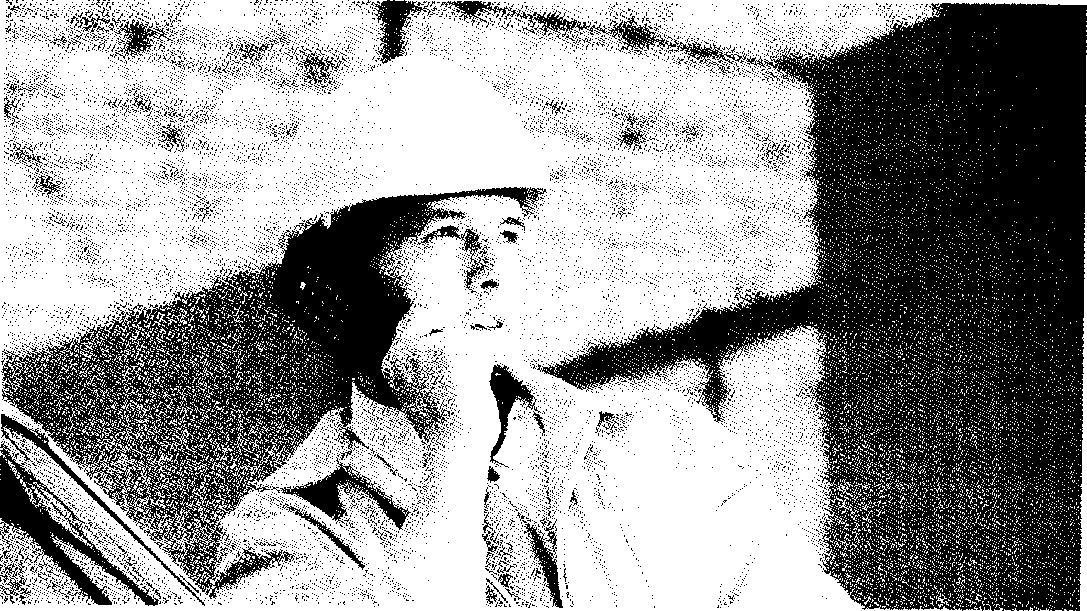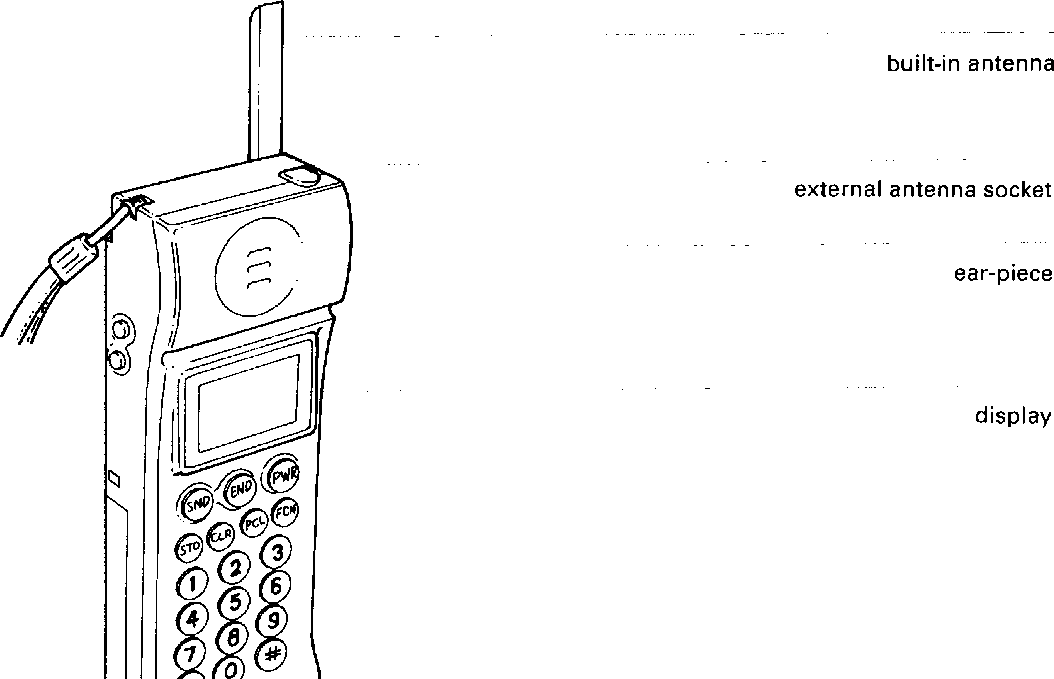
- •29 Word study Verbs and related nouns
- •34 Language study Describing a process
- •3 6 Writing Describing a process
- •Tuning-in
- •66 Writing 2 Ordering components
- •74 Tuning-in
- •81 Listening
- •82 Language study Would
- •In the future, electronics are likely to become even more common in the home as multimedia entertainment systems and computer-controlled robots are developed.
- •Rf carrier
- •Introduction to Electronic Systems
- •16 Weeks X 2 VI hours
- •When is the lunch break?
- •10 These tolerances may seem to reflect poor manufacture but in most circuits they are, in fact, quite satisfactory. Relaxing the tolerance enables the makerto sell them more cheaply.
- •X varactor diode
- •Identify each of the following diodes:
- •10 The first stage consists of a transformer which steps down the voltage of the ac mains (see Fig. 2).
- •Smoothed dc input
- •15 Common is reverb (reverberation) which can make the music sound as if it was recorded in a very large building or a very small room.
- •Making a recording Places People Equipment
- •4 How is mixing down like developing and printing a photograph?
- •In this text which are additional to those given on the tape.
- •3 You must always keep an eye on the recording level.
- •1 A photodiode picks up rays from the remote control.
- •Ir diode
- •2 How many detection devices does it show? Name them.
- •4 If a burglar walks in front of a motion sensor,
- •7 A magnet on the moving part trips a switch if
- •Sensing device Used to detect
- •9V battery
- •In a frequency-modulated (fm) wave, the audio signal is combined with the rf carrier wave to vary the frequency of the carrier (see Fig. 2).
- •Af power amplifier
- •Via di Pietra Papa 00146 Roma
- •25 Die away naturally. As it dies, the current in the object reactivates the search coil. This voltage is then amplified to indicate with a sound or a flashing light that an object has been found.
- •4 The magnetic field a voltage in the search coil.
- •5 Noise is also by the low-frequency mains supply.
- •In left
- •In right о г
- •Interviewer: a test engineer. What would that involve?
- •I Is there any other kind of work you! enjoy?
- •15 Instead of recording the sound waves continuously, a drum з
- •4 These are converted to electrical signals by (use) a microphone.
- •15 Vinyl records are eliminated such as 'crackle' caused by dust and static, and 'jumping', due to scratches on the recording surface.
- •8 What might be the effect of so many people having cd players?
- •1 Unlike lPs, cDs use a digital recording system.
- •7 The electron gun in a crt a stream of electrons.
- •20 With an oscilloscope so that a visual display of the waveform can be seen.
- •45 Electrons.
- •Video cassette recorder
- •Italics from the text below. One has been done for you.
- •Vhs video-recorder mechanism
- •15 The number of iCs used in a computer, I.E. The chip count, can be reduced by connecting nand gates together to form other types of gates (see Fig. 3).
- •Integration as shown in Table 1. The 1с shown in Fig. 2 is an ssi 20 device but microprocessors used in computers are vlsi or slsi devices.
- •Input impedance low high
- •Instead of using the complicated springs, cogs, and wheels of a mechanical watch, the digital watch uses a vibrating crystal to keep time. It is accurate to one second in 10 years.
- •Vibrating crystal
- •15 Each one-second pulse triggers the microchip to send signals to the digital display to advance the numerals by one second.
- •Xdiaphragm
- •65 System.
- •1 Engineers developed optical fibre cables in the 1980s.
- •2 What is the purpose of the dielectric material in coaxial cable?
- •Insulator (e.G. Polyethylene) sheath
- •Insulator (e.G. Polyethylene) covering wire
- •25 Microwaves can be guided along rectangular copper ducts by a series of reflections from the inner walls (see Fig. 4).
- •If you make a mistake when keying in a number and you want to delete the last digit:
- •If you hold down clr,the whole numberwill be deleted and the p3 will go back to standby.
- •3 What is the difference between a mobile phone and a cellphone?
- •20 Telephone calls at the same time. To achieve this, each
- •30 Compromise between the number of frequency channels available in each cell and the interference between communications in different cells.
- •40 Calls from other cellphones and fixed telephones throughout the whole telephone system (see Fig. 2).
- •50 Call, the 8kHz signal is discontinued and the speech channel is enabled.
- •8 The signal indicates a suitable frequency channel for the call.
- •5 Converts the binary data into digital information (lines 21-22)
- •International international
- •40 As ordering goods and controlling bank accounts.
- •1 Avionics
- •2 Computing
- •3 Defence
- •1991-Present
- •1990-1991 Summer 1989
- •1 A technician with experience in servicing hospital equipment.
- •4900 University Avenue
- •If you would like to hear about outstanding opportunities in Europe to work in the expanding area of personal communication systems, write to:
- •If you can fill one of these vacancies, contact us at once.
- •I'm interested. I have the following training/ experience:
- •If a target is hit. .
- •Input signal
- •1 Manufacturing
- •2 Planning
- •3 Installation
- •4 Commissioning
- •If a target is hit. .
- •5 Maintenance
- •6 Sales
- •8 Research and Development
- •30 Large companies run their own r&d departments. Exciting
- •Induced in an inductor in opposition to the
- •Video image of the internal organs of a
- •2 [13] One side (left or right) of a stereo
- •In one unit and sharing a common
- •Voltage produced by an electrical source
- •241 Solid cylinder of metal oxide insulating
- •Video picture flip-flop /'flip йар/ [24] digital electronic
- •Instrument used for detecting pulses and
- •1 Or 0, high or low) long wave /'log weiv/ [10] range of radio
- •Voltage ac electricity supply maintain /mem'tem/ [22, 29] keep in good
- •Integrated circuit on one piece of silicon microcomputer/,maikraukam'pju:ta(r)/
- •Instrument for measuring various electrical quantities including voltage, current and resistance
- •Inputs are high natural frequency /.Naetjaral 'fri:kwansi/
- •Voltage ionizes the neon gas inside network /'netw3:k/ [26] system of
- •Interconnected devices network manager /,netw3:k 'тгепк1зэ(г)/
- •Interconnected telephone lines for use by
- •In a public telephone network which
- •Voltage which causes a component to pass
- •Various signals used in the test and
- •Integration: between 104 and 10s active
- •Voltage level from varying stable /'steibl/ [24] in a balanced state stage /steid3/ [5] circuit block: section of
- •In a circuit suppress /sa'pres/ [18] prevent a signal
- •Iks,tjemd3/ [28] switching centre for
- •Video signal teletype terminal /'telitaip ,t3:minal/ [28]
- •Images over long distances television receiver Ле1шзп n,si:v9(r)/
- •Isolating an ac supply voltage transistor /traen'zistsir)/ [1]
- •28] Cable or duct for guiding signals
- •Variable capacitor or resistor for making
- •V/VI:/[4, 11] volt
- •Vacuum tube /'vaekjuim tju:b/ [1 ]
- •Vdu /VI: di: 'ju:/ [28] visual (or video)
- •Video screen vdu terminal /VI: di: 'ju: ,t3:min3l/ [28]
- •Video recorders
- •Video-conferencing
- •Voltmeter I
2 What is the purpose of the dielectric material in coaxial cable?
3 What frequencies can be carried by the following types of transmission lines? a coax
b waveguides
4 What are the advantages of optical fibre cable?
Transmission lines
Telecommunications involves the transmission of information, including voice, data, TV, and radio over long distances. The transmission medium can be free space (ground, space, and sky waves), or the information can be guided between transmitters and 5 receivers using transmission line cables of various kinds. These include:
Parallel wires
This is the simplest type of transmission line consisting of a pair of insulated copper wires running side-by-side and covered by a plastic sheath (see Fig. 1). It is prone to interference and is only used to carry 10 information over small distances such as telephone connections within a building.
![]()
parallel-wire copper conductor
wire
insulator
Fig.
1
15
Twisted pair
Two insulated copper wires are twisted together to reduce interference effects and are enclosed in an insulating polyethylene sheath (see Fig. 2). Because the wires are twisted, unwanted stray signals picked up by one tend to be cancelled by similar signals picked up by the other. They are used for communications over longer distances, for example to connect telephones to their local exchange.
copper wire conductors
Insulator (e.G. Polyethylene) sheath

Insulator (e.G. Polyethylene) covering wire
Fig. 2
Coaxial cable (coax)
Flexible coax has a copper wire core surrounded by copper braid. The core and braid are insulated from each other by a dielectric material 20 such as polyethylene and covered by a PVC sheath (see Fig. 3).

Fig. 3
The braid helps to screen the signals from interference. Coax can carry a large number of signals over long distances at frequencies up to 1 000MHz. It is used to connect telephone exchanges and for cable television.
Waveguides
25 Microwaves can be guided along rectangular copper ducts by a series of reflections from the inner walls (see Fig. 4).
jrectangular iwaveguide
(a) rectangular waveguide for microwave transmission
sidewall
of waveguide
wave
propagation direction

connecting flange

(b) 'guiding' of electromagnetic waves in a waveguide
Fig. 4
The exact dimensions of the ducts are determined by the frequency to be transmitted. Suitable frequencies are between 1 GHz and 300GHz. Waveguides are used to carry microwave signals between dish aerials 30 and receivers.
Optical fibres
An inner core made from very pure silica fibre is surrounded by a similar glass sheath, known as cladding. This is covered by a protective plastic sheath. Non-visible light from lasers or LEDs can travel along the fibre by reflection from the surface where the core and 35 cladding meet (see Fig. 5).
jlight reflected at core/cladding {interface

r* ►)
~ 100(xm
Fig. 5
Although the optical fibre has a smaller diameterthan a human hair, it can be used to transmit tens of thousands of signals at high speed with very low loss and no interference from other signals. Optical fibre cable can be used in corrosive environments and is light, flexible and 40 cheap. This type of cable is gradually replacing conventional copper wire for connecting telephones and computer networks.
Complete this table using information from the text.
Transmission line Component materials Examples of use
telephone connections
within buildings
twisted pair copper wire, plastic
insulation
copper wire, copper trunk telephone lines,
braid, polyethylene cable television
sheath
copper ducts
optical fibres

Using information from the text on transmission lines and from Unit 10, note the transmission medium which could be used for each of the numbered links on this diagram.
Cellphones

Tuning-in
Study this diagram of a cellphone. Note the buttons marked:
a SND с PWR e CLR g FCN b END d STO f PCL

Which buttons would you press for these operations? Justify your answers.
switching on or off
using one of the programming functions
deleting mistakes or individual numbers
finishing your call
starting your call after keying in the number
Task 2 Check your answers to Task 1 by reading quickly through this text.
Making a call
■ Press PWR to turn the P3 on.
To prevent the phone being turned on or off accidentally, you need to hold down the PWR key to operate it.
Key in the number.
Press SND.
